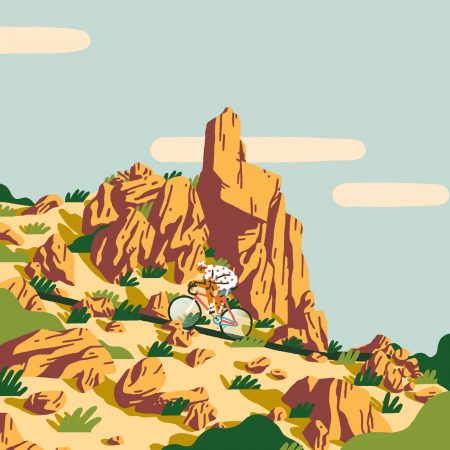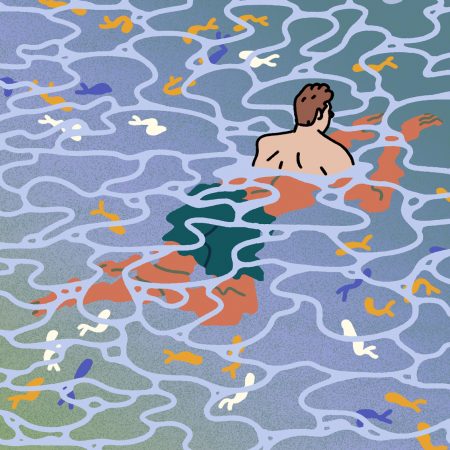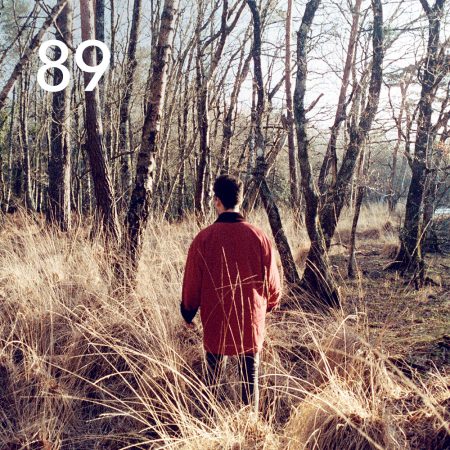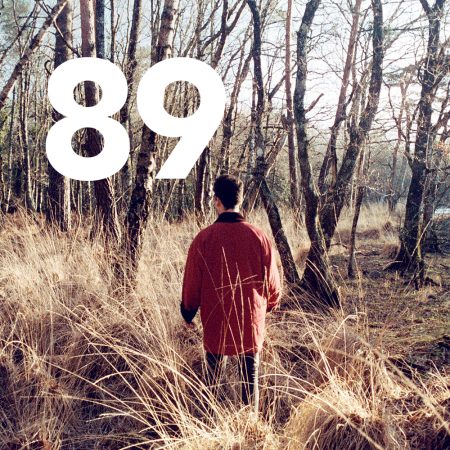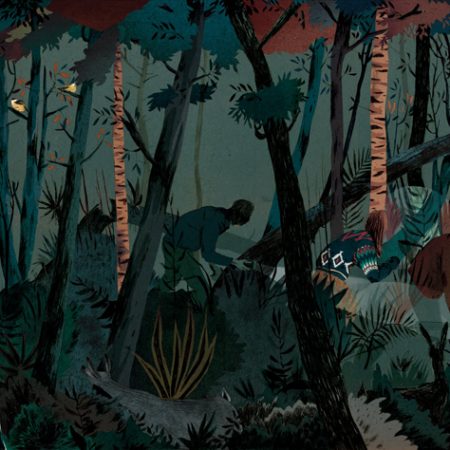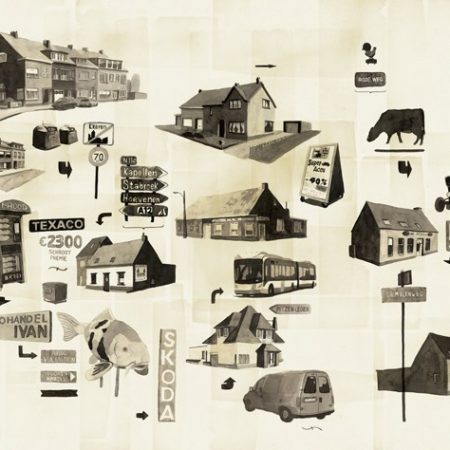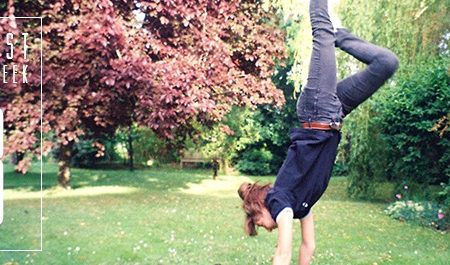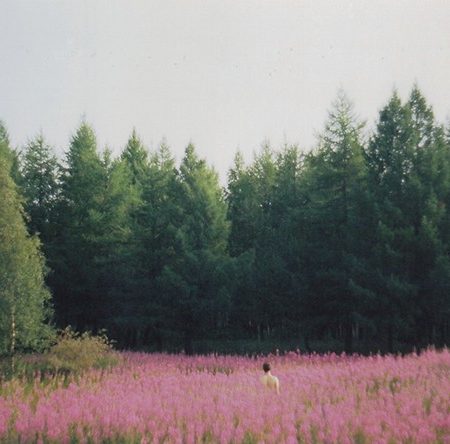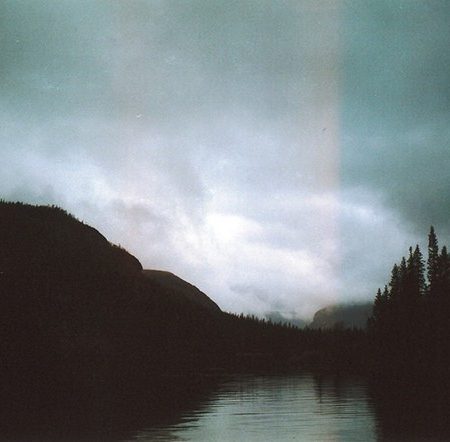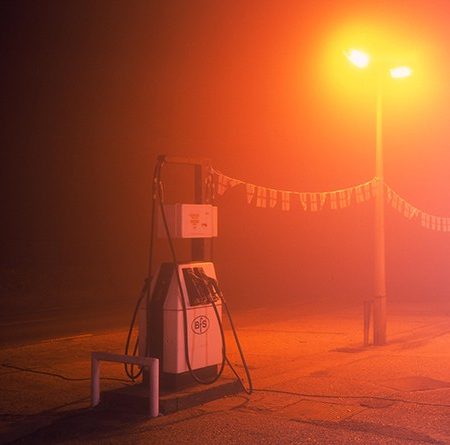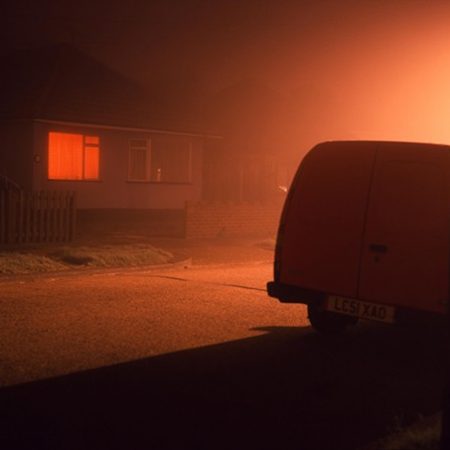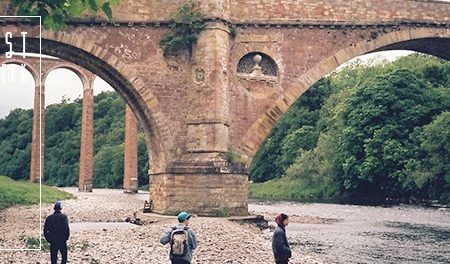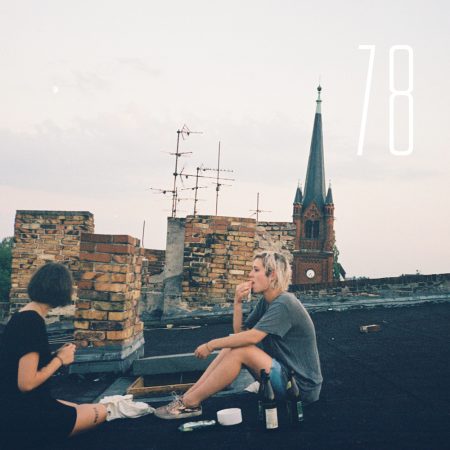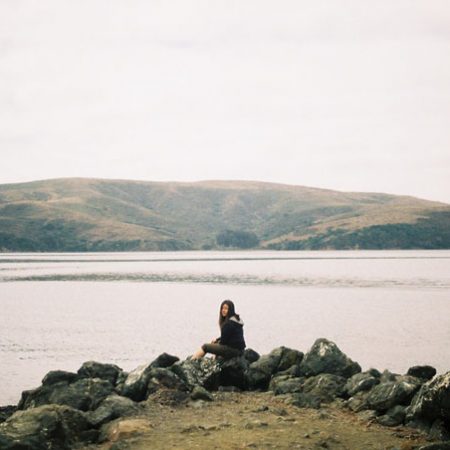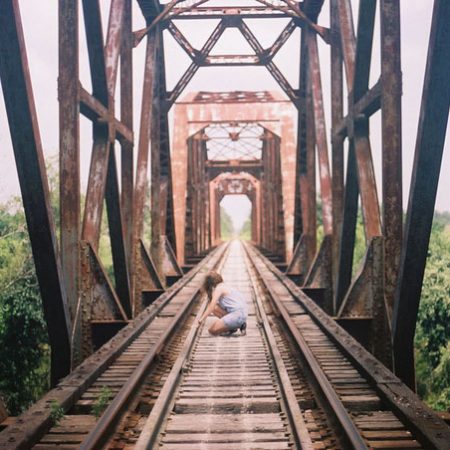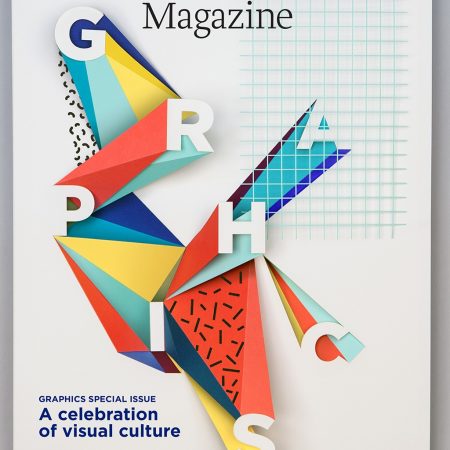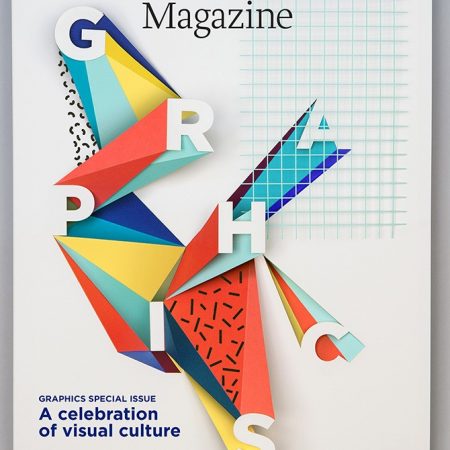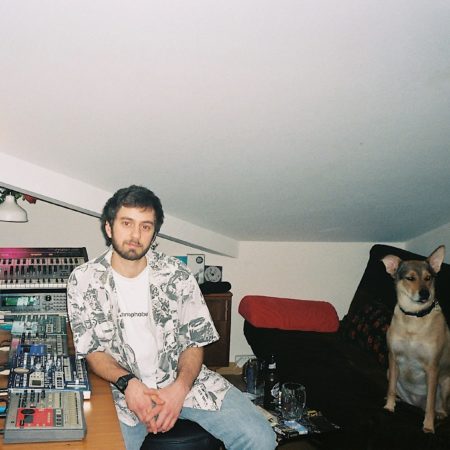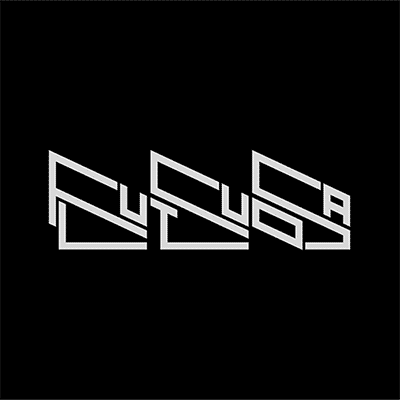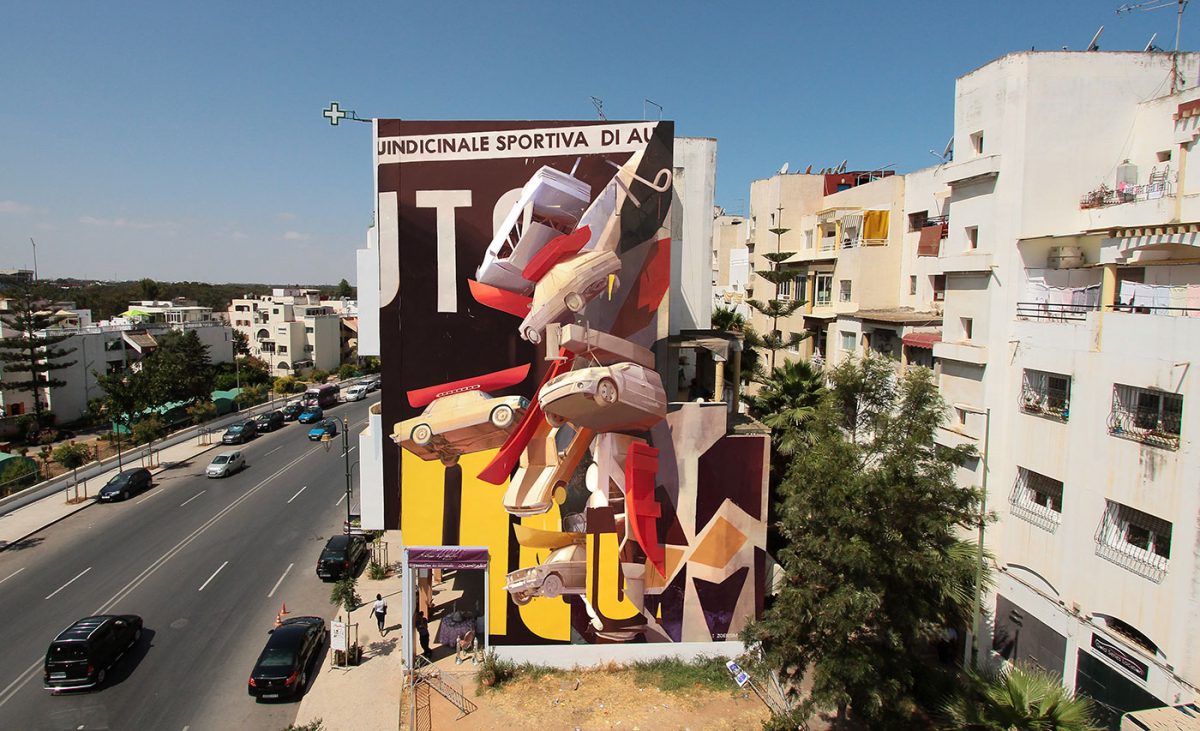
I am inspired by natural accidents of forms and messy arrangements.
ZOER
ART . January 23rd, 2019Hello Zoer, what’s your favorite car?
BMW 02 series ‘69 to ´75
I read that your dad owned a Renault 18, what do you feel when you see one now?
Actually, I had my first experience with graffiti through a R18. I mean It is a little legend in the family. My mom says I was not that happy that my dad bought this car. Was around 1987 and it seems that I used some rocks to scratch the entire body of the car. I don’t know if it was about aesthetic attraction or repulsion.
Anyway some first spontaneous relation with physical objects.
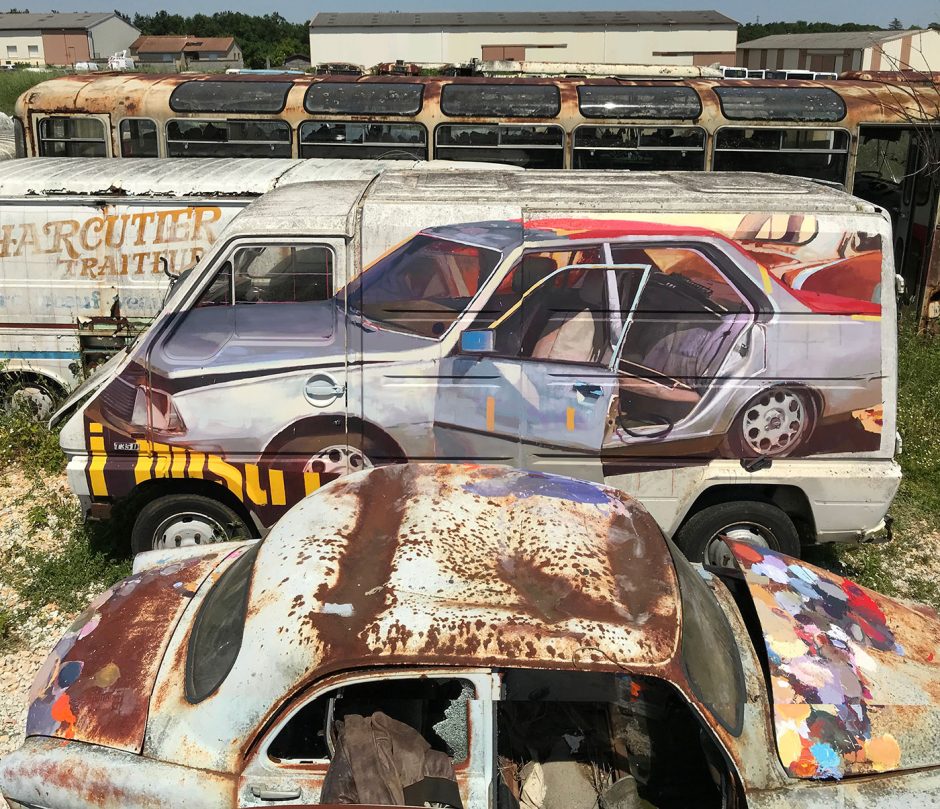
Zoer, R18, 2018, on site specific acrylic on Renault truck, France
You mainly represent geometric European cars from the 80/90s, where does this kind of obsession come from and how did it started?
I won’t call it an obsession, it’s more a passion and my way to artistically question painting and our society. Trained as a product designer, I use to draw industrial object and understand manufacturing process, what humankind devised, modeled and transformed. I do think that automotive is maybe the object that best defines the complexity and the acceleration of the 20th century. Roland Barthes said “cars are consumed in images if not in usage by a whole population which appropriates them as a purely magical object”. By depicting old cars, I talk about a dream past where the automobile embody the culture, the aspirations and desires of successives generations.
I like how all these significations can take shape in some strictly industrially determinate objects. Squares and boxes.
I like the « normal » objects. I also have a deep interest in how objects witnesses a special time, era and how it crosses the time. Time flies, objects remains, and are traces, evidences of the past that allows you to travel back in time and memories.
By drawing cars with ordinary shape (I would say I’ve been always attracted by these common objects, never by dream cars), I am talking about the whole society and the entire meaning of objects, not being exclusive by the shape aspect.
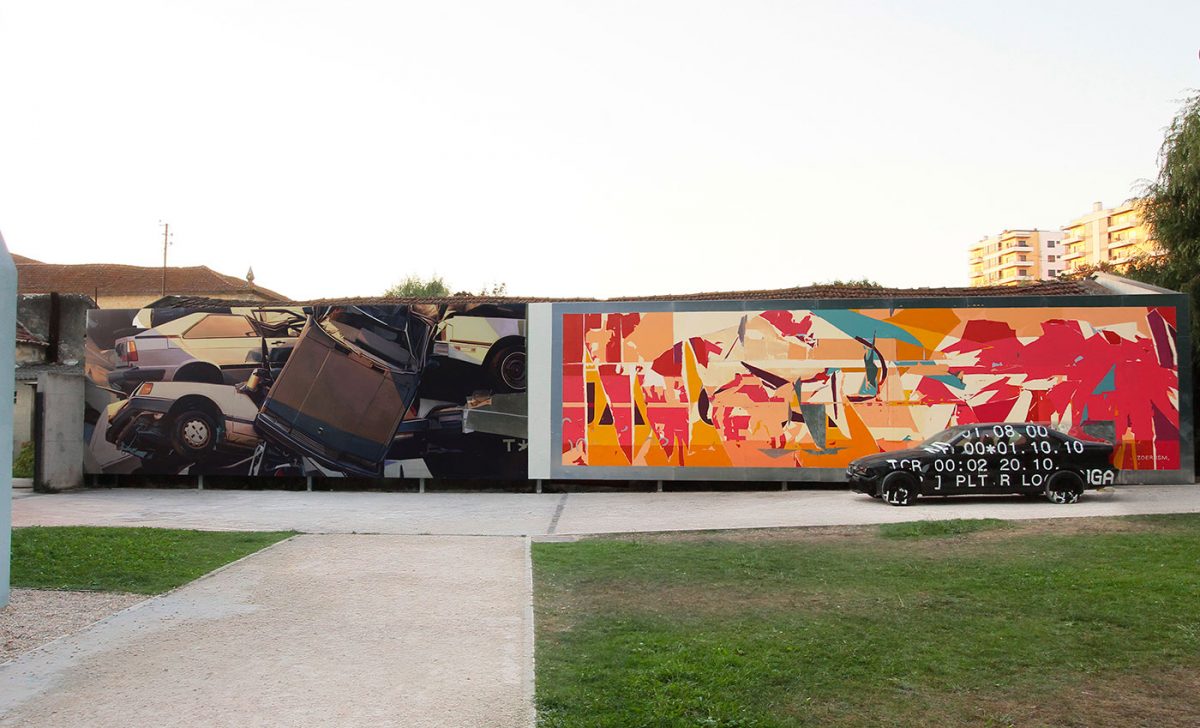
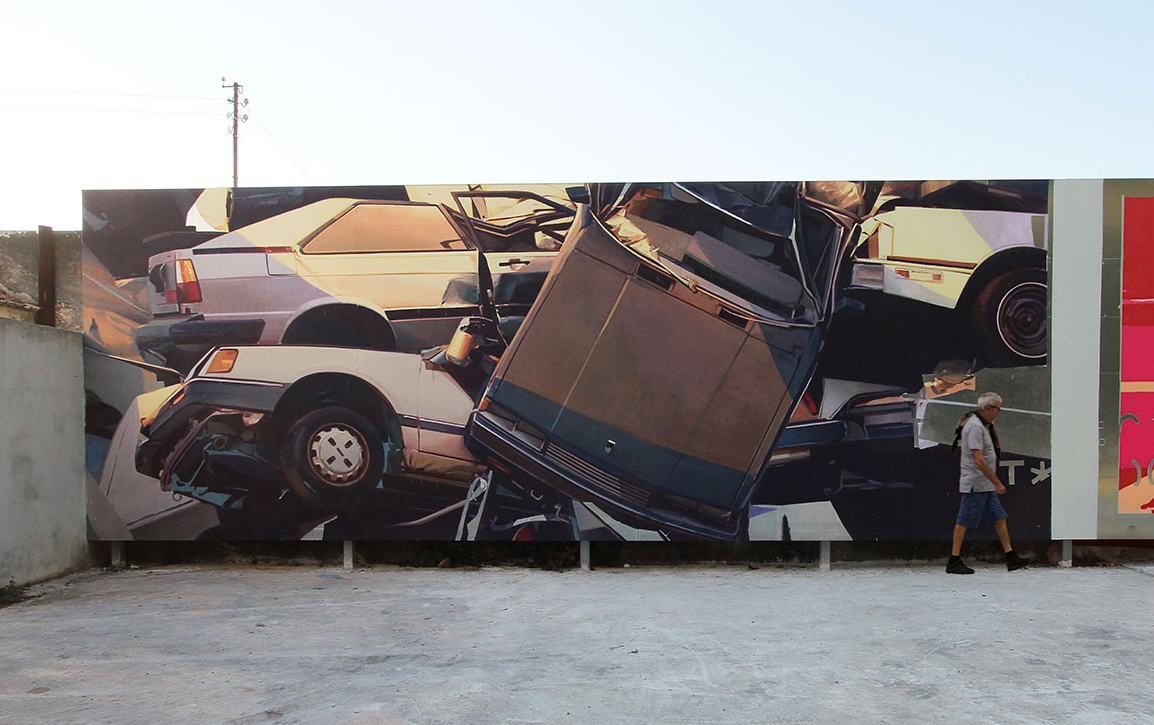 Zoer, Electrolytes, 2018, on site specific acrylic on stainless steel, Leiria, Portugal
Zoer, Electrolytes, 2018, on site specific acrylic on stainless steel, Leiria, Portugal
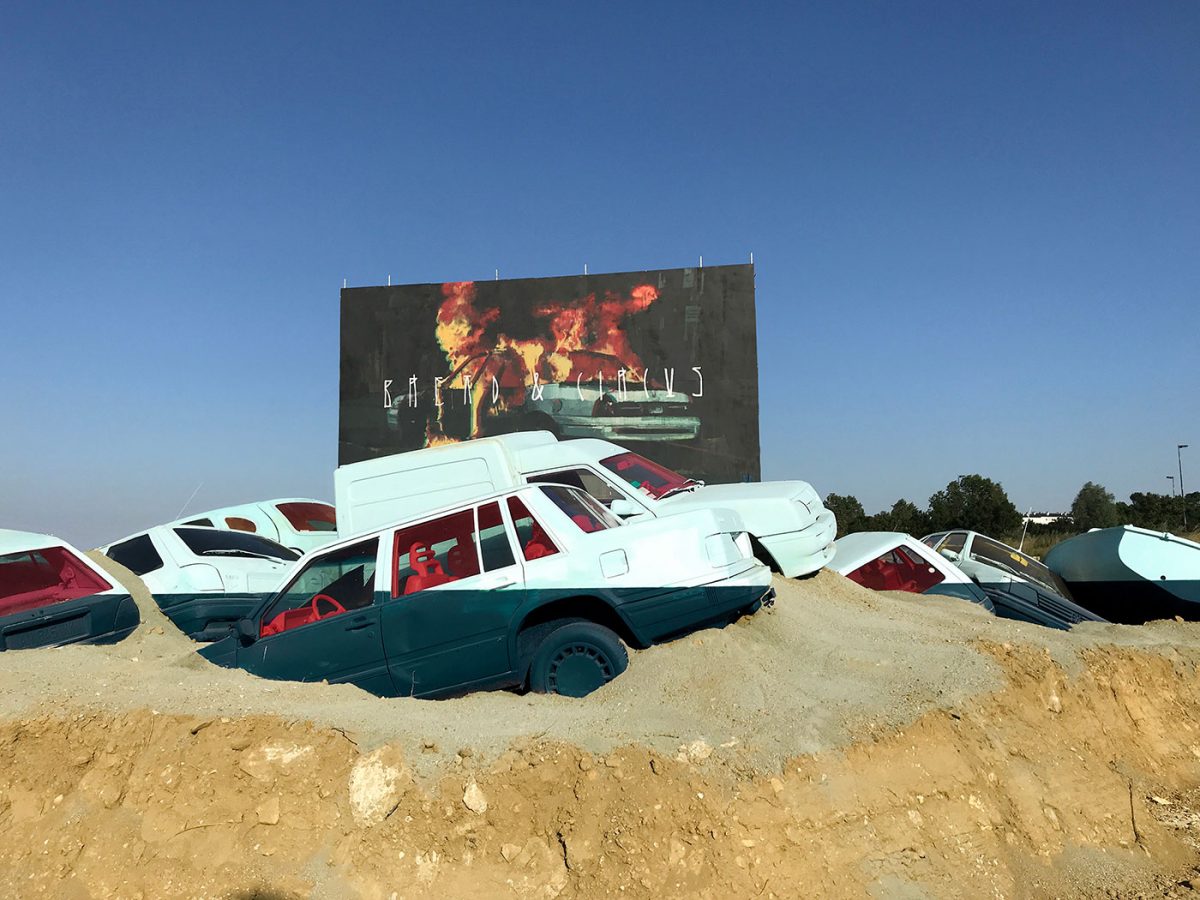 Zoer & Velvet, Nouvelle Vague, 2018, on site specific installation, le voyage à Nantes, Nantes, France / Billboard by Axel Void
Zoer & Velvet, Nouvelle Vague, 2018, on site specific installation, le voyage à Nantes, Nantes, France / Billboard by Axel Void
You always paint upside down vehicles, broken stuff, objects in places they usually don’t belong. Is it a desire to show the disorders of the world in the apparently tidy and clean society that we usually promote on the walls?
Questioning the form is at the heart of my pictorial process in my most recent works. By definition, the form is the first sensorial vector. I am inspired by natural accidents of forms and messy arrangements because they are just reflecting the natural and non organised, non planned aspect of the things. By depicting those new forms, I try to create images that reflect the weakness of a society with disproportionate needs.

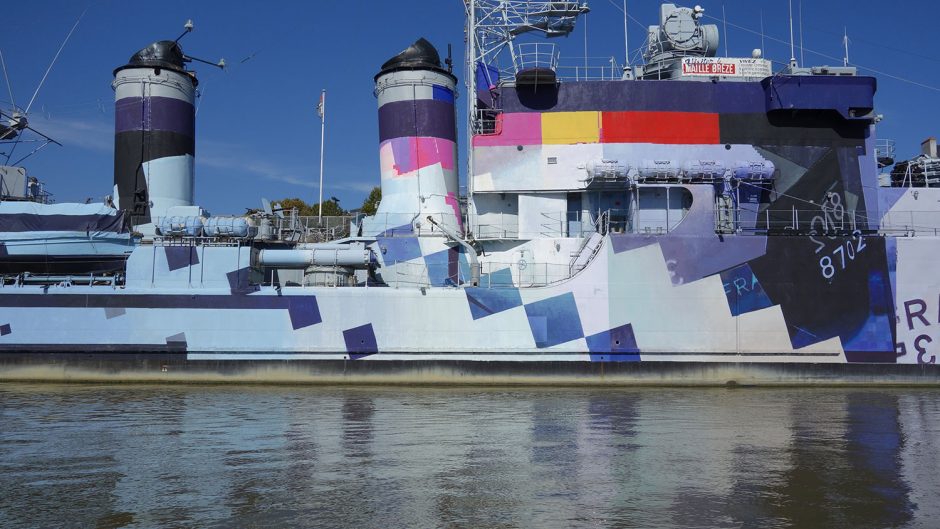
Zoer & Velvet, Maillé-Brézé, 2015, on site specific acrylic on escort ship, dimensions variable, Nantes, France
Your work on the old french warship, the Maillé-Brézé was really impressive. How did this happen? and what were the constraints for this special project?
I was invited with my friend Velvet by an association, Plus de Couleurs, in Nantes, run by Antoine, Guillaume and Mervin, to paint the Maillé-Brézé. They were thinking about this on site specific painting since a long time so they gave a lot of energy to make that project happen and we did it. From the beginning the painting has to be removed, so the boat was first covered with a wax to avoid any painting marks and to remove it with a water karcher. In term of logistic, a scaffolding on a boat was built allowing us to paint the Maillé-Brézé in his all dimensions, this boat was tied with ropes at both extremities like that we could sail very close to the escort ship. You have an image of this installation on my website.
For that really special project, we wanted to give our interpretation of razzle dazzle. To hide the Maillé Brézé, we’ve choosen to create like an encrypted pattern relating to modern war technics to represent an image full of pixels and punctuate by topographic indications.
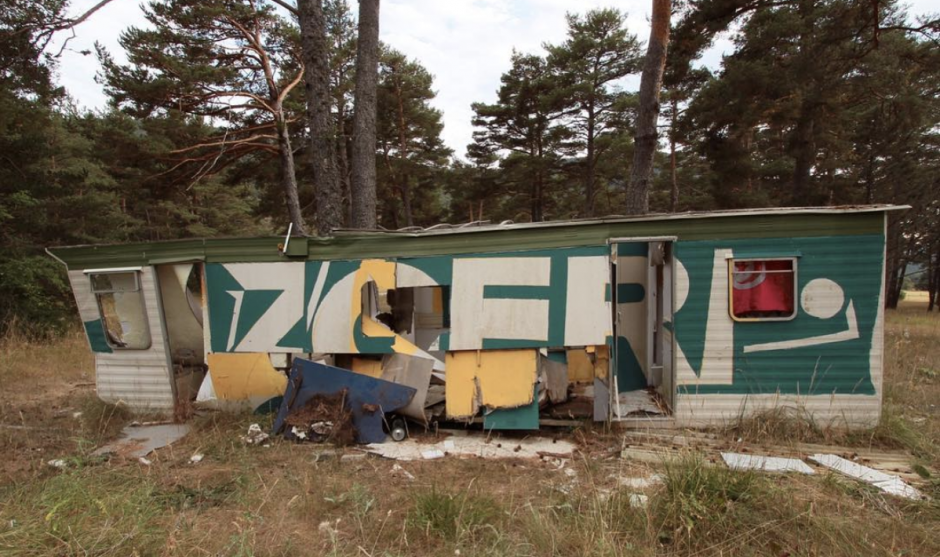
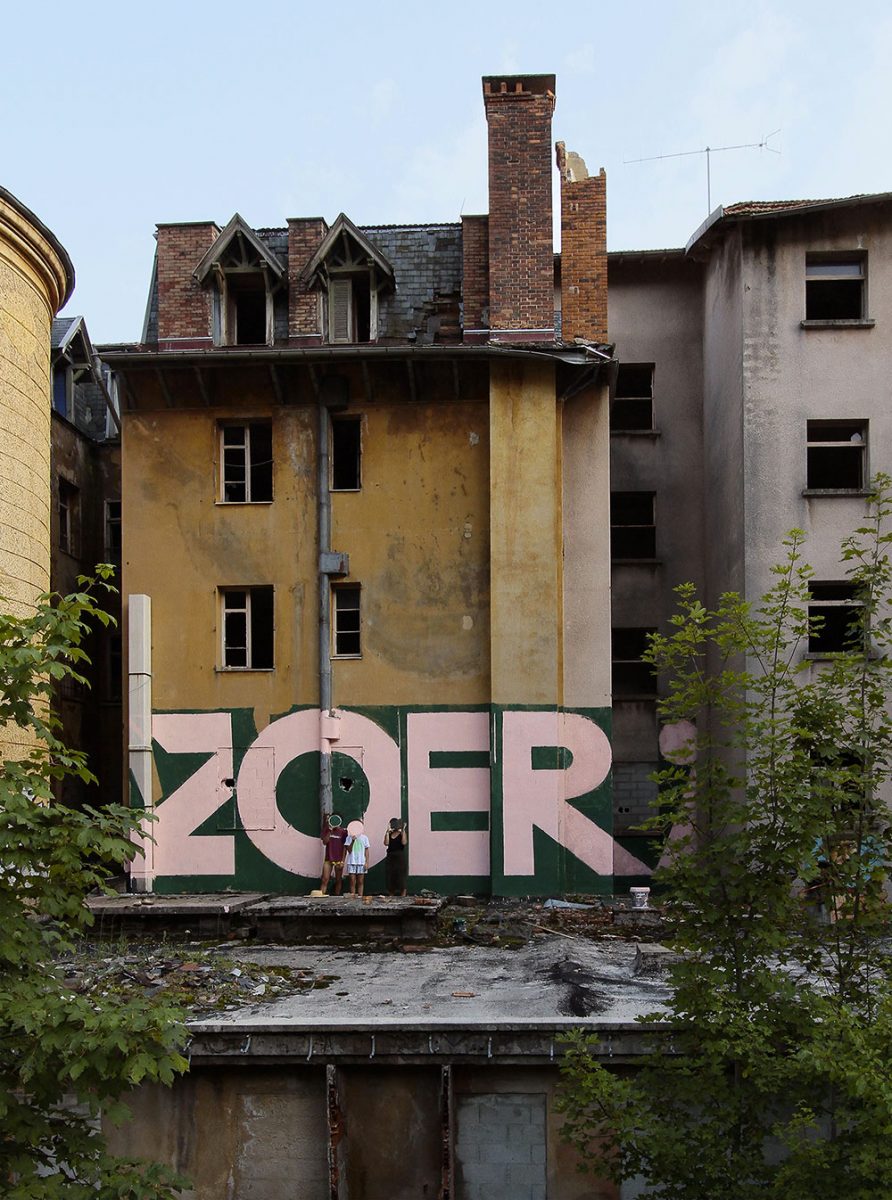
Can you tell us a bit more about the role of typography in your works?
Coming from the graffiti, I was used to write my name as much as I could and to improve my style writing. So at the beginning, I was mixing letters to illustration inspired by car industry, comics and design. Then, the pictures concept becomes more important than the word but it was still important for me to keep a mark of letters, let’s say signs. Typography was the way to connect both univers. By depicting old cars or damaged objects, typographie is a way to talk about advertising and to associate those objects to what still exist after their consumption.
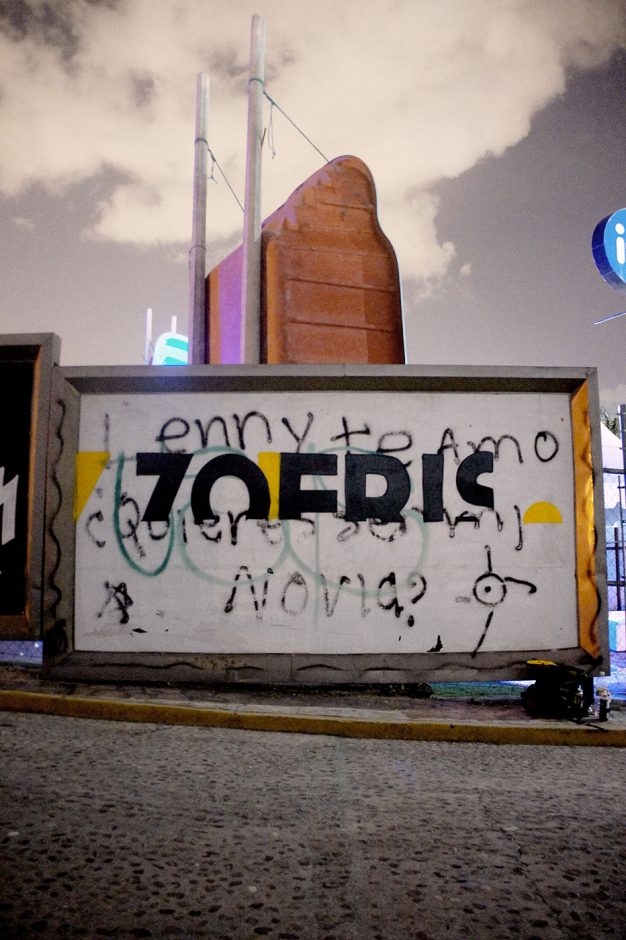 Zoer, Typographie, 2013, Monterey, Mexico
Zoer, Typographie, 2013, Monterey, Mexico
For other practices, typographie is also a way for me to continue to write my name everywhere but to give the feeling that my name was always there. For example, few years ago, I was invited in Monterrey (Mexico), I remember made a typography on a wall full of tags -which was really beautiful by the way. So I get around every single letters, first of all to respect this other and secondly because at the end my typography appears as a background and seams to be here since a long time, the aesthetic of something which passes through the time interests me a lot.
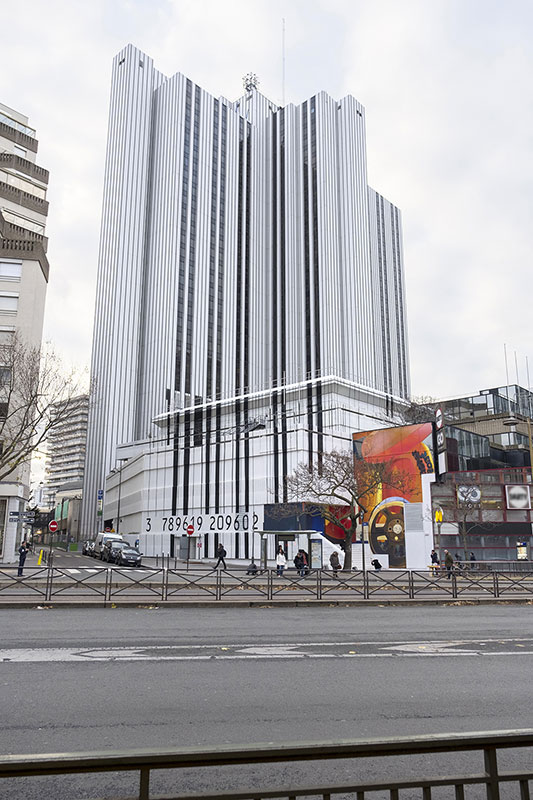 Zoer & Velvet, Support Grande Surface, 2017, on site specific acrylic on concrete, les ateliers Gaité, Paris, France
Zoer & Velvet, Support Grande Surface, 2017, on site specific acrylic on concrete, les ateliers Gaité, Paris, France
What was the first really big piece you remember doing?
Silver piece CSX in a small street of Grasse, south of France. 2004
Which one of your painting project are you the most proud of?
So many good experiences of painting but if I have to choose only one, I think it’ll be the wall made in Granollers. [see below] In 2017, I was invited with Velvet to paint a mural in Granollers, by Grito and Aryz, it is their city, they made the contact to make it happen. That mural was inspired by the current context in Catalonia and was designed thanks to some strong exchanges with the schools, the people and the company from the area. Context, architecture, meeting all these interesting people, meeting with Cumella ceramics made that experience unusual and full of strong and positive energy. The human and global approach makes for me the difference until now every time I was invited to create.
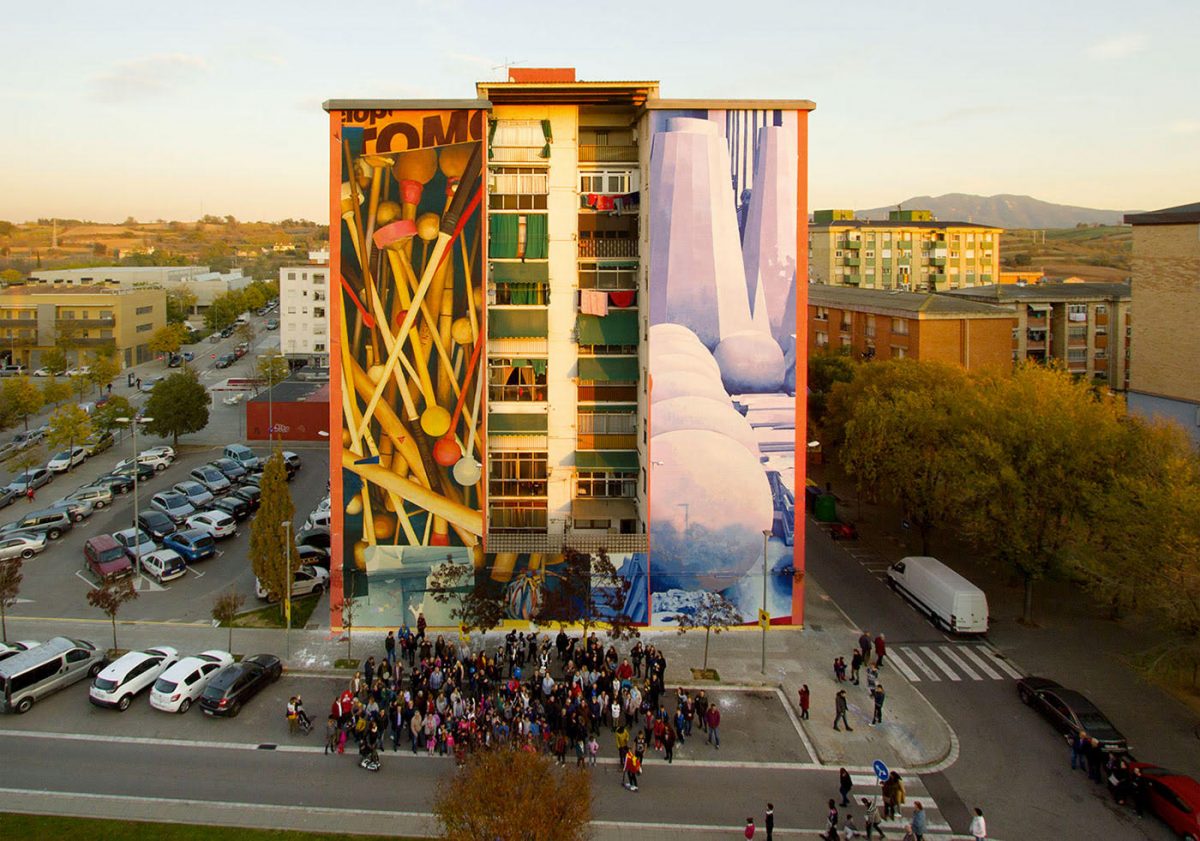 Zoer & Velvet, TOMO, 2017, acrylic on concrete, Granollers, Spain
Zoer & Velvet, TOMO, 2017, acrylic on concrete, Granollers, Spain
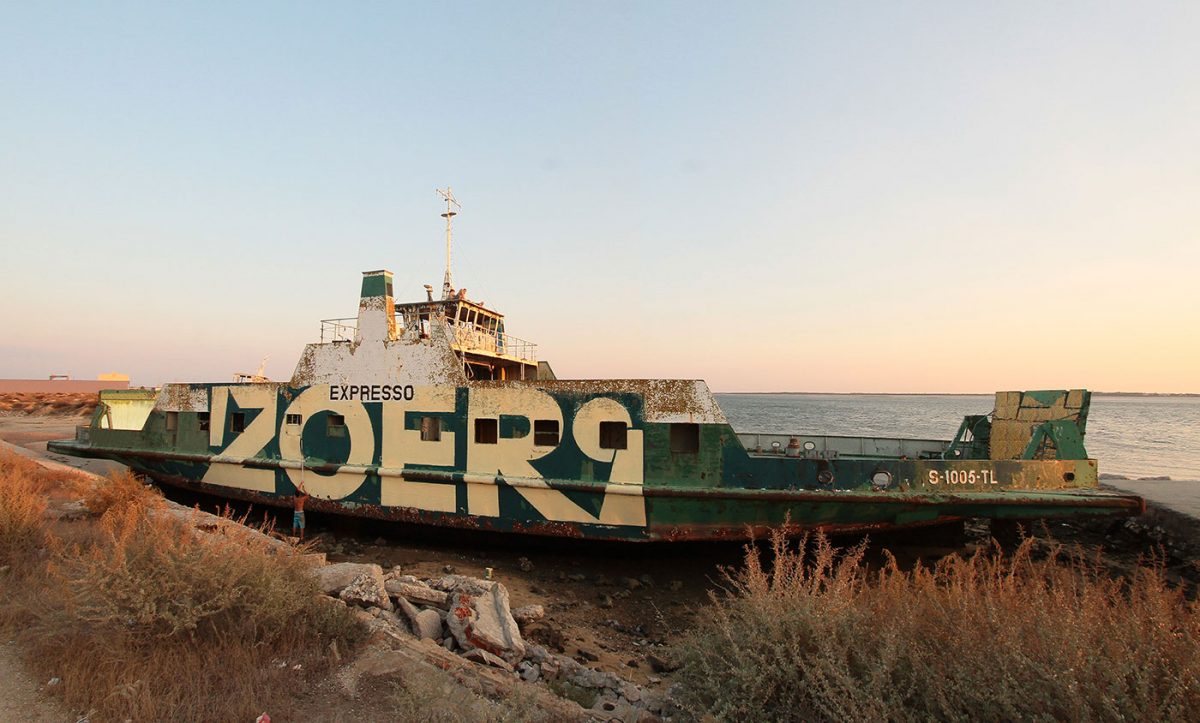 Zoer, Expresso, 2018, on site specific acrylic on boat, Setubal, Portugal
Zoer, Expresso, 2018, on site specific acrylic on boat, Setubal, Portugal
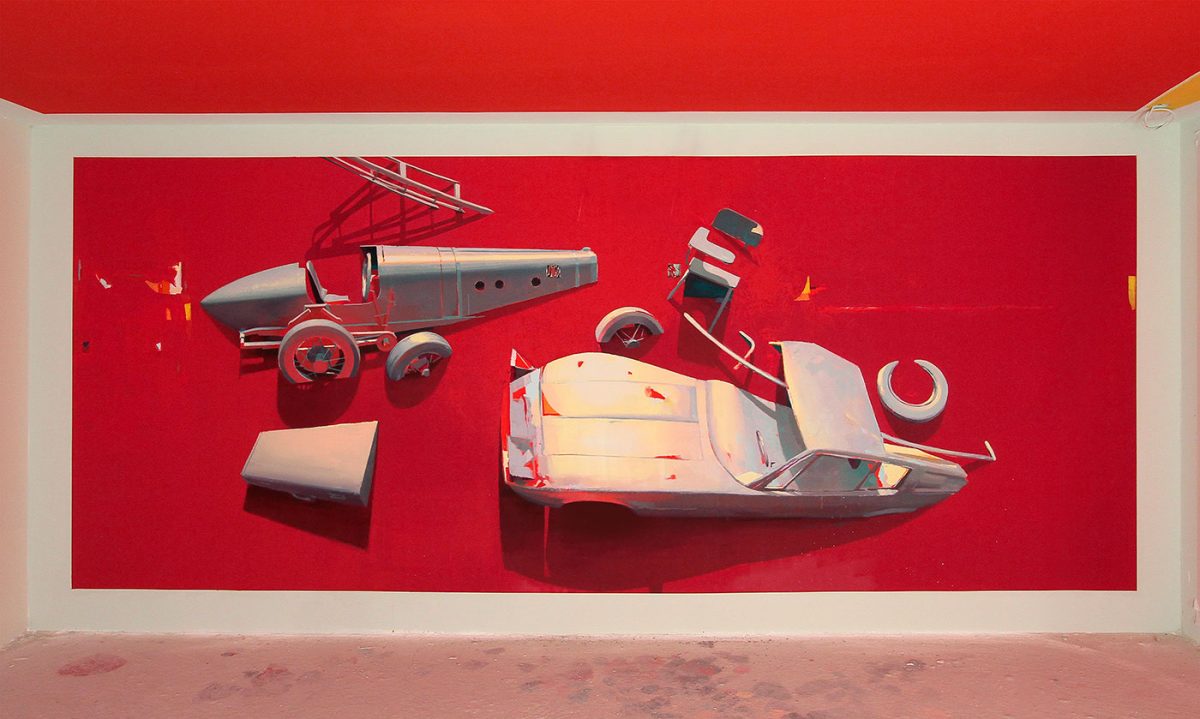 Zoer, Low relief – petrified objects, 2018, on site specific acrylic on concrete, Saint-Nicolas de Veroce, France, private collection
Zoer, Low relief – petrified objects, 2018, on site specific acrylic on concrete, Saint-Nicolas de Veroce, France, private collection
Do you prefer commissioned legal works (bigger scale, more impact and time) or quick vandal pieces on buildings or trains? Can you tell us about the actual difference in feelings in your head and body?
Both practices are in my body of works complementary, being invited in cities to make huge mural is a big responsibility because it’s important to take in consideration the fact that people who live there are gonna see it everyday day. But not making the things commercial, I mean always pushing some radical concepts, out of a possible commercial seduction. So in my opinion, it’s necessary to be inspired by the area to create. When I’m doing a painting in an abandoned place, I feel very free. I just wait the places to call me. Whatever it is trains or streets or abandoned areas, I don’t paint just for painting, I now hardly understand the interest of going to paint every sunday a new wildstyle in the same hall of fame. So I am waiting the spots to call me. And whenever a spot is making enough sense, then I go to paint it, simple letters, as big as I can, but always trying to shock by the simplicity of the message, and questioning: Did that piece always exist? Was it there for long time? Is it an advertising, is it legal? I am always interested about the true interaction that I can get with the surface concerned.
Choose 2 songs that you think fit well with your universe.
Daft Punk – Burnin .1997
Laurent Garnier – Acid Eiffel .1993
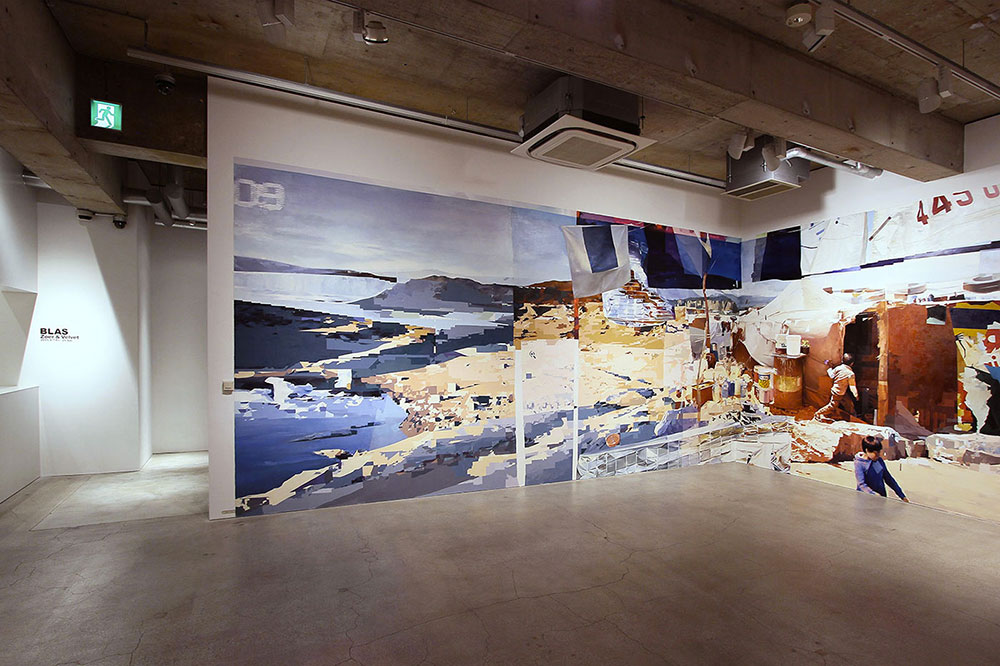 Zoer, Exmateria, 2015, oil and acrylic on canvas, dimensions variable, view of the exhibition BLAS at Kaikai Kiki Gallery, Tokyo, Japan (detail)
Zoer, Exmateria, 2015, oil and acrylic on canvas, dimensions variable, view of the exhibition BLAS at Kaikai Kiki Gallery, Tokyo, Japan (detail)
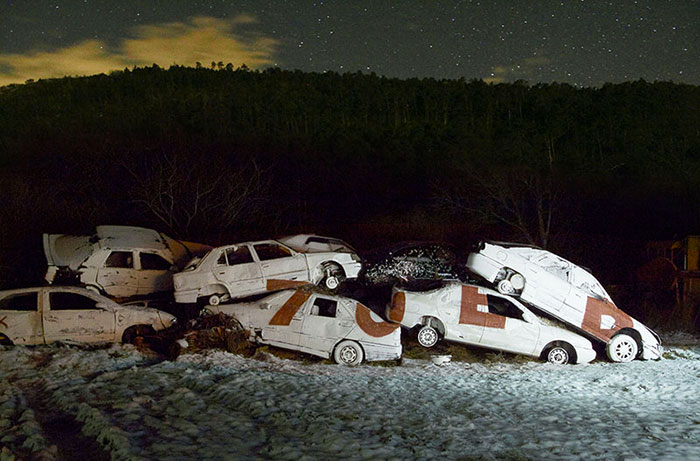 Zoer, cleaning, 2015, on site specific acrylic on cars
Zoer, cleaning, 2015, on site specific acrylic on cars
What’s next for you?
This winter, I’m gonna do a huge project in a car scrapyard motivated by the ecological necessity to help the owner to clean-up the ground of this junk yard. So, I’m gonna made a large on site specific installation mixing paintings and real cars. Then, thank to the edition of a book talking about the project, I’m going to try to raise funds to help them. Art becomes the leitmotiv of solidarity initiative
What are you doing to just having answered to this final question?
PAINT and going to continue to built my studio mobile. I’m working with a friend specialised in converting a van in mobile house and gallery, he lives in a school bus he transformed by himself which is actually a real art piece and we are trying to make that van as well designed to be able to travel and paint easily everywhere.
ps : I want to buy a R18, do you think it’s still a good idea? :)
In case you do, call me, I’ll bring couple of rocks to draw on the body
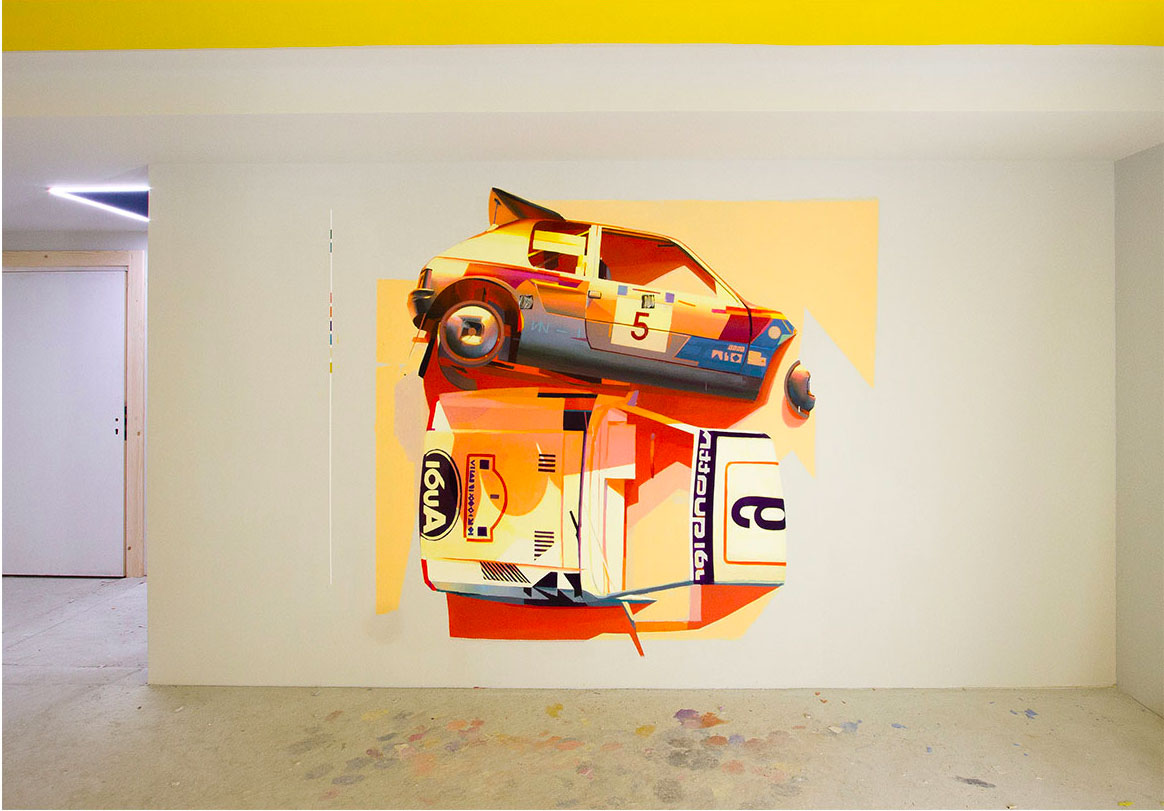 Zoer, Low relief 2, 2018, on site specific acrylic on concrete, Saint-Nicolas de Veroce, France, private collection
Zoer, Low relief 2, 2018, on site specific acrylic on concrete, Saint-Nicolas de Veroce, France, private collection
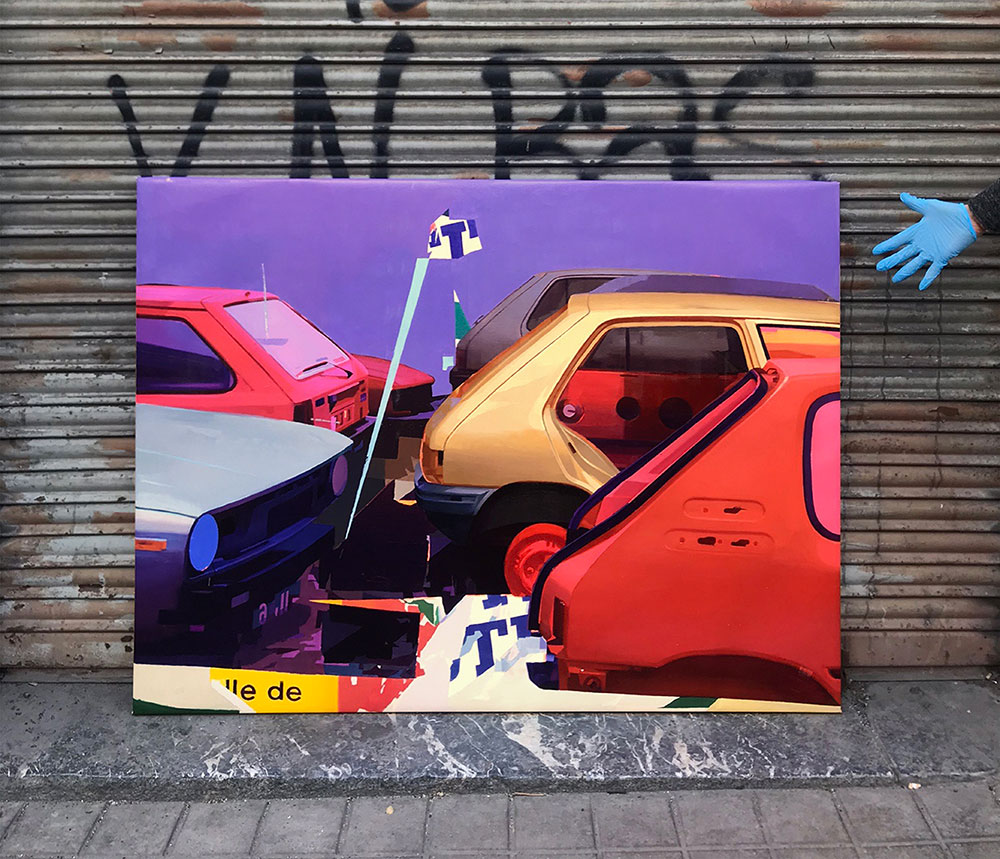 Zoer, Sacre Numero, 2018, oil on canvas, 110 x 145 cm, private collection
Zoer, Sacre Numero, 2018, oil on canvas, 110 x 145 cm, private collection
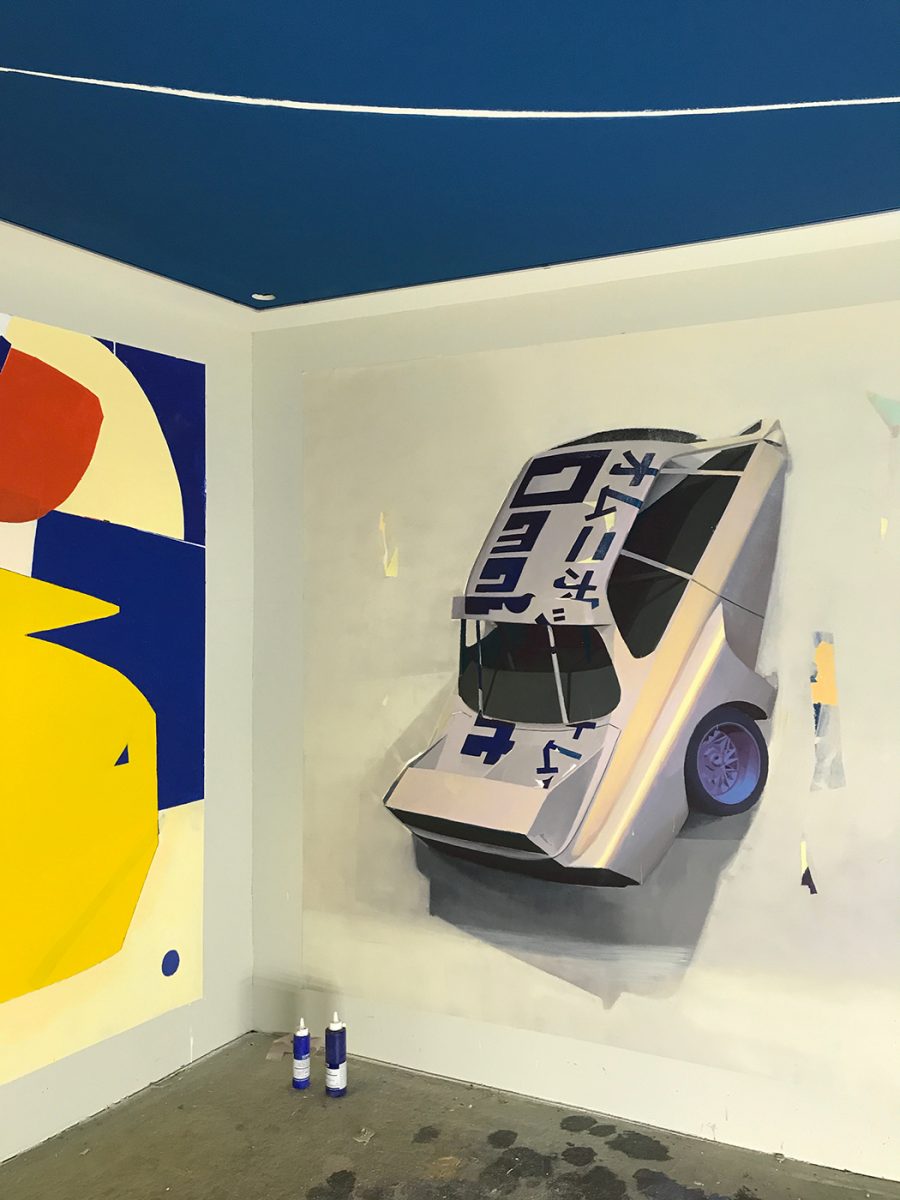 Zoer, Mirrors (detail), 2018, on-site-specific acrylic painting, 205 x 720 cm L’Armancette, Saint-Nicolas de Veroce
Zoer, Mirrors (detail), 2018, on-site-specific acrylic painting, 205 x 720 cm L’Armancette, Saint-Nicolas de Veroce
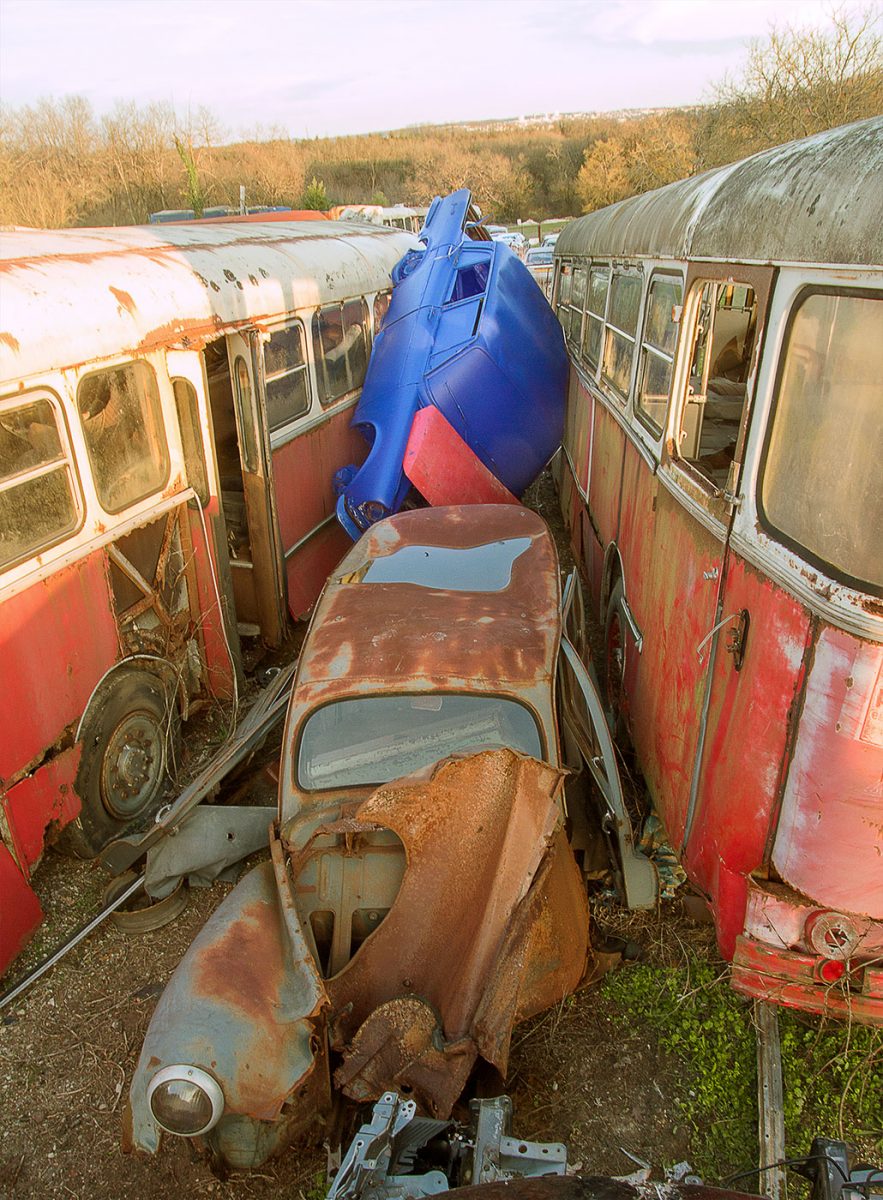 Zoer, Blue Rubber, 2017, on site specific acrylic on Simca 1200
Zoer, Blue Rubber, 2017, on site specific acrylic on Simca 1200
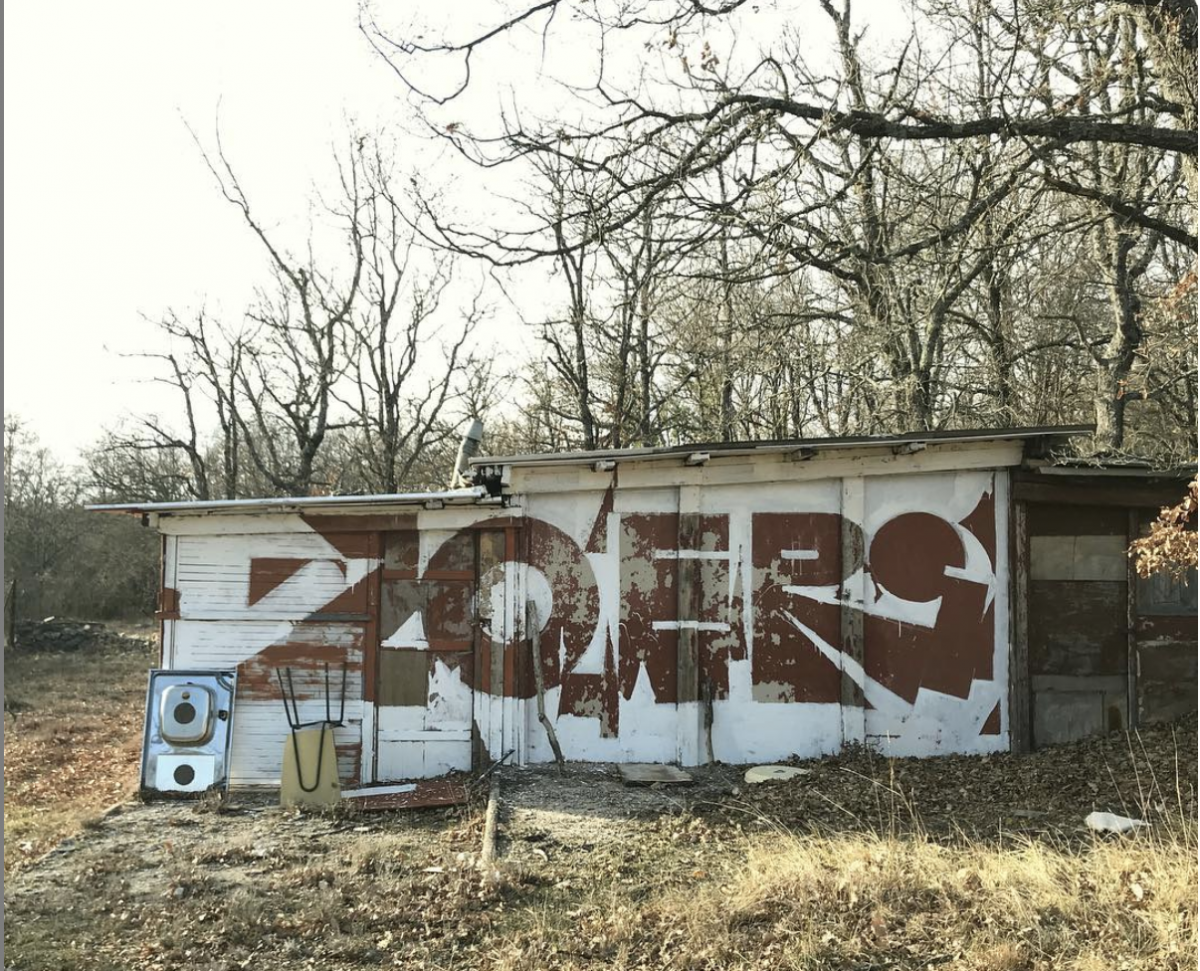
Zoer is a french artist born in France in 1985, he lives and works in Paris. Discover more on his website or his instagram.
